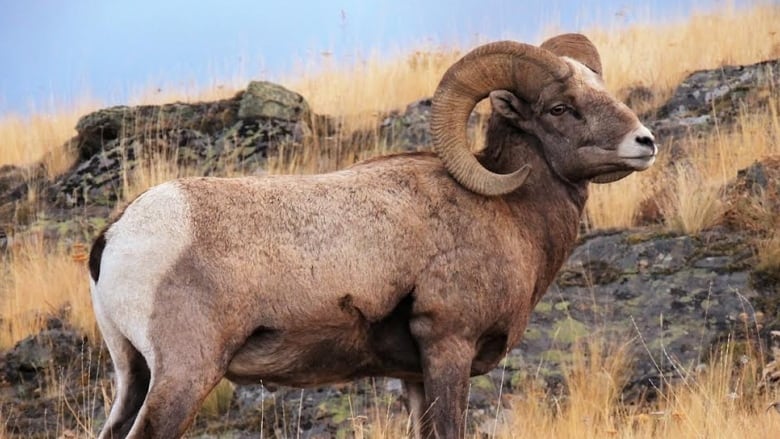Trophy hunting stunting the horns of Bighorn sheep, study finds
'What you have here is clearly artificial selection,' biology professor says

Trophy hunting of bighorn rams is stunting the growth of the species' most famous feature, according to research at the University of Alberta.
The 43-year study on a population of bighorn sheep at Ram Mountain near Nordegg, Atlta., about 300 kilometres southwest of Edmonton, concluded that hunting is responsible for the"artificial evolution" of the species, resulting in smaller horn sizes.
"What you have here is clearly artificial selection," saidbiological sciencesprofessorDavid Coltman."You can imagine that harvested animals don't have any more offspring. Their genes are removed from the gene pool."
In aninterview on Edmonton AM Thursday,Coltman saidthe average size of horns within the isolated herd declined more than 20 per cent over 20 years, a trend which continued with surprising regularity until the mid 1990's when hunting was halted in the area.
"In the first half of the study, the population was being hunted under the same regulations as the rest of Alberta, so any ram that reached the legalsize limit could be shot," said Coltman.
"When hunting stopped,the decline stopped," he said. "They gradually started to recover but the decline was much more rapid than the recovery was. Human influence is much stronger than natural influences."
Big trophies become sparse
Because rams reach their peak reproductive years long after their horns reach the legal size limit for hunting, Coltman saidthe trait for large horns is systematically culled from ram populations.
"It's a very sharped-edged selection," he said. "A large-horned ram is pretty unlucky, because he's more likely to be shot before he reaches the age where he's dominant and having lots of sons.
"As soon as you become legal, you've got a 50-50 chance of making it to the mating season that year."
Coltman saidthe phenomenon continues in areas of the province where hunting is prevalentand the horns of mature rams racks which can weigh up to 30 lb are coveted.
"From a trophy-hunting perspective, it means that it's harder to find a good-quality trophy. They're getting to be more rare.
"And there's a certain irony in that," said Coltman, who notes thatmore licencesareissued to trophy hunters than there are available legal rams.
According to Coltman,Albertans need to hunt fewer rams,re-examine size requirements or adjust the timing of the hunting season to allow more rams to reach maturity.
The findings will be published in the scientific journal Evolutionary Applications.












_(720p).jpg)


 OFFICIAL HD MUSIC VIDEO.jpg)
.jpg)



























































































